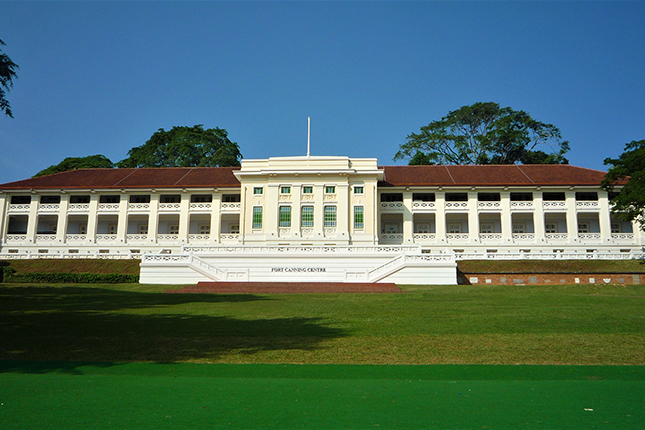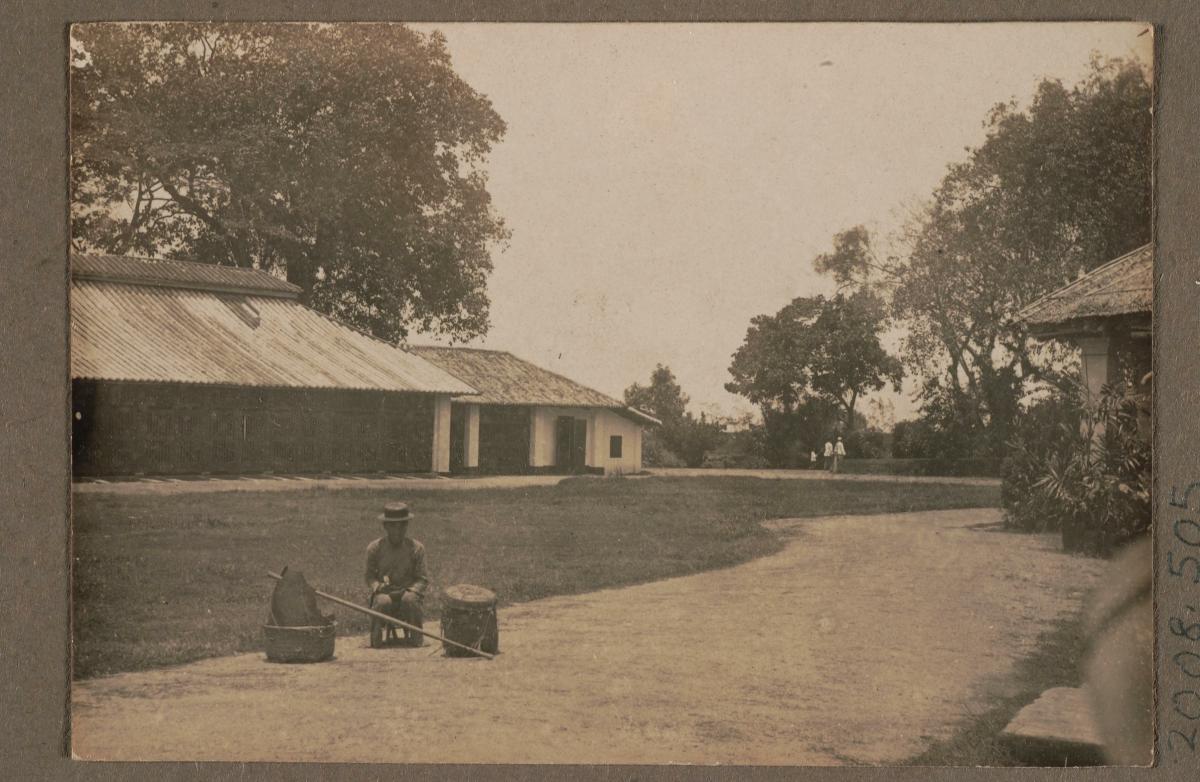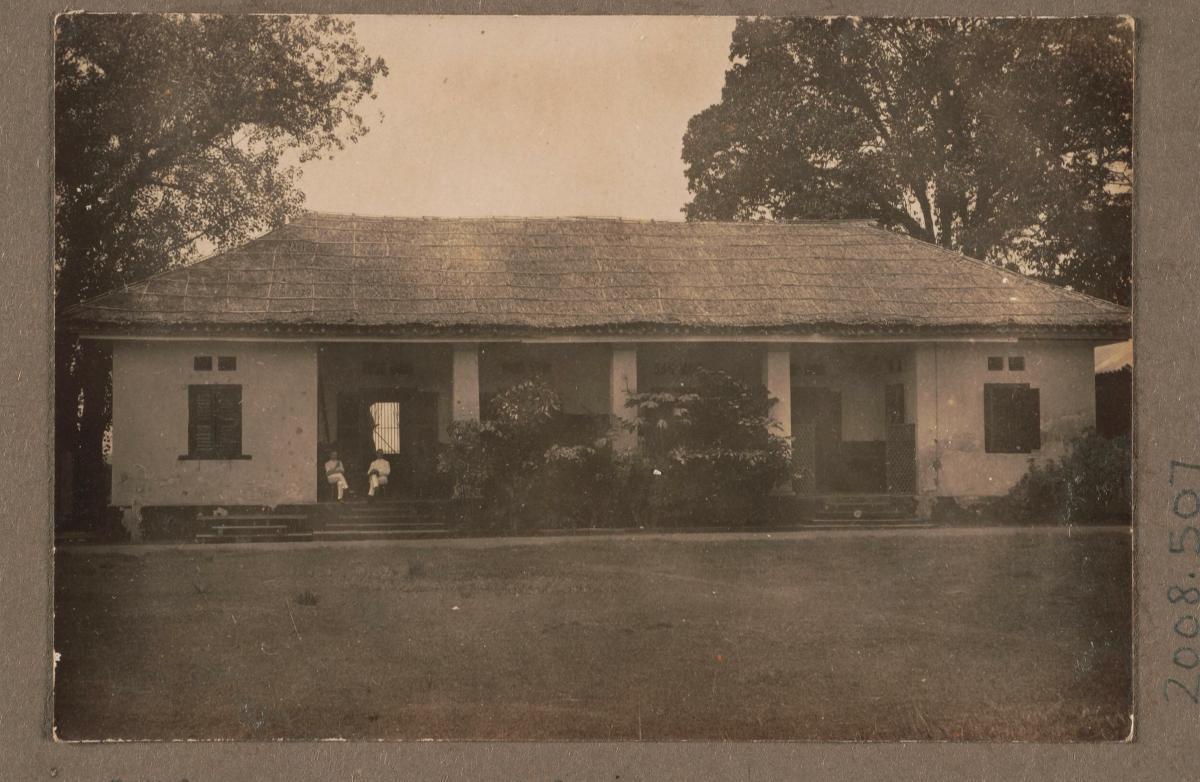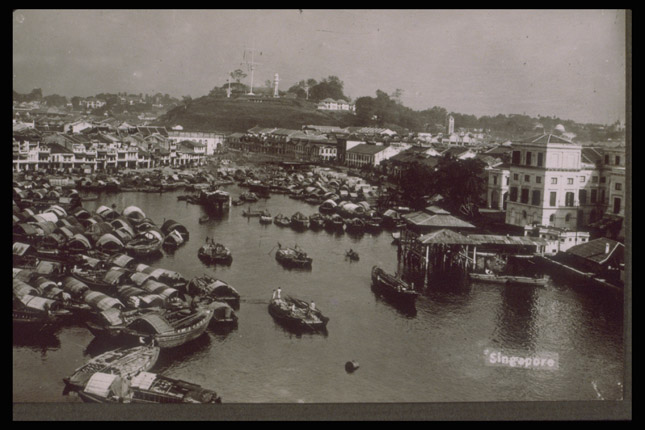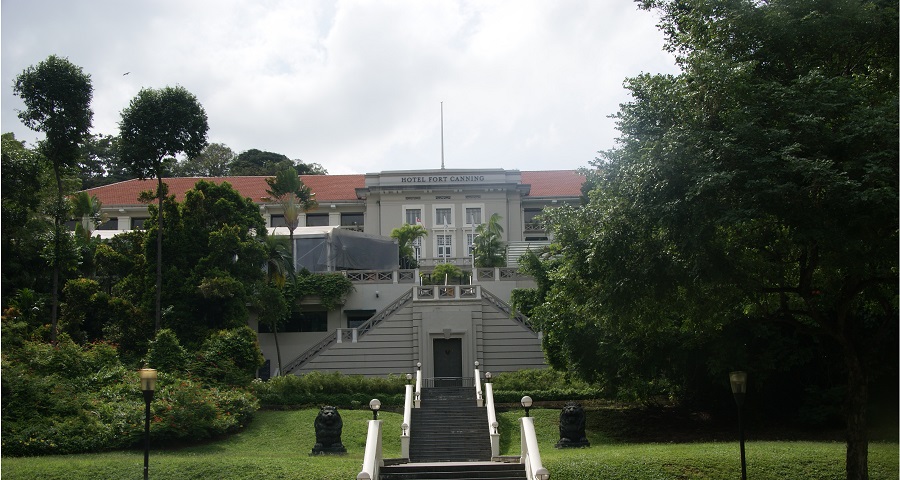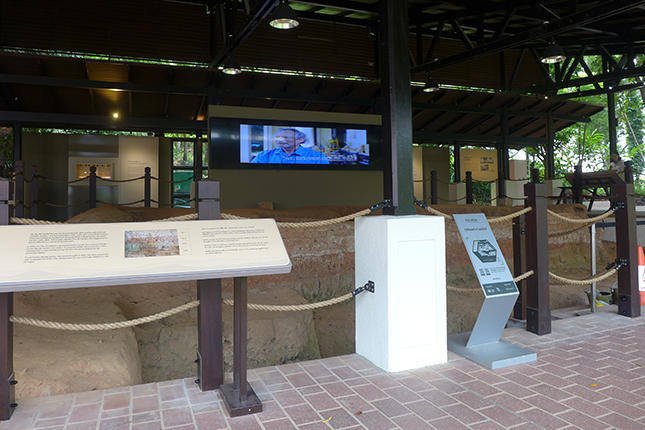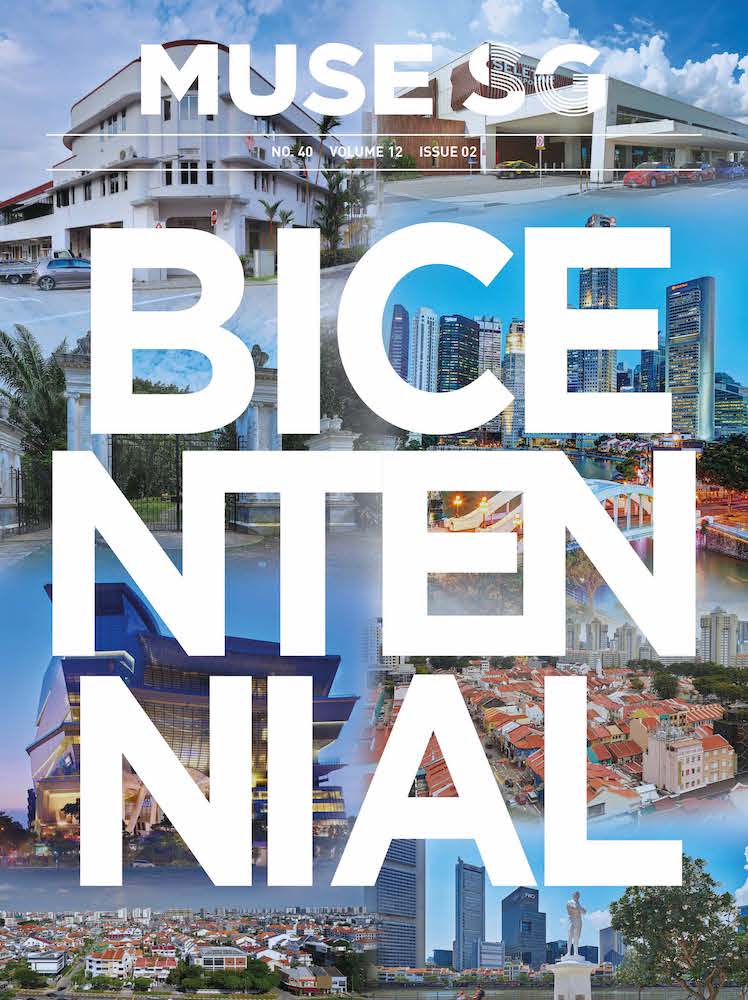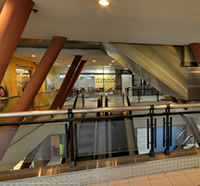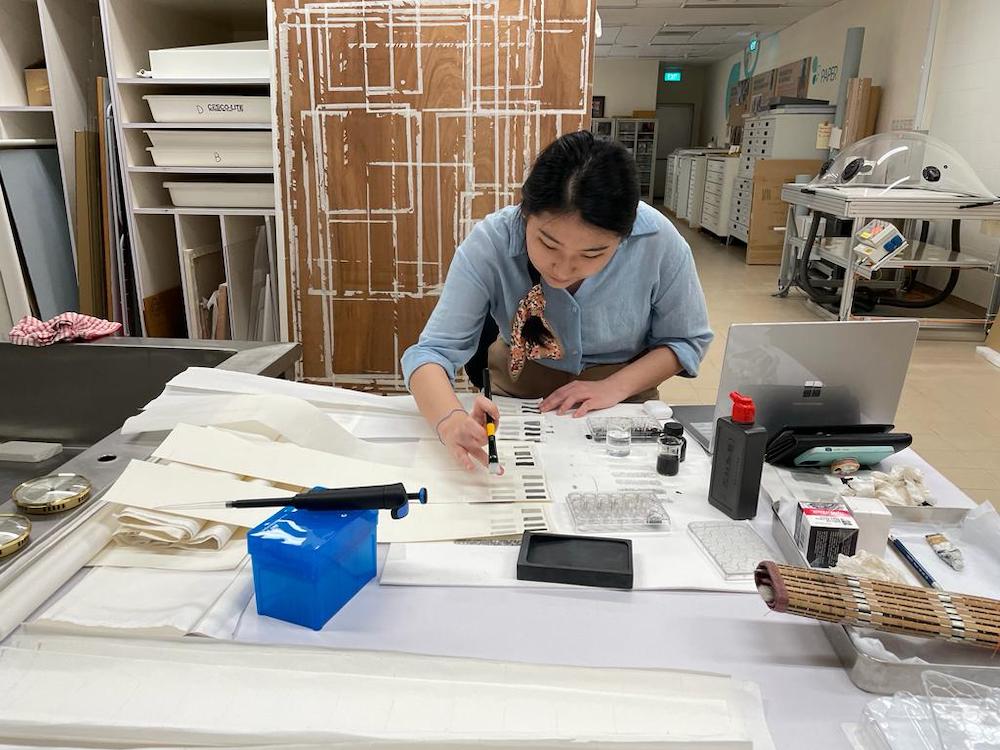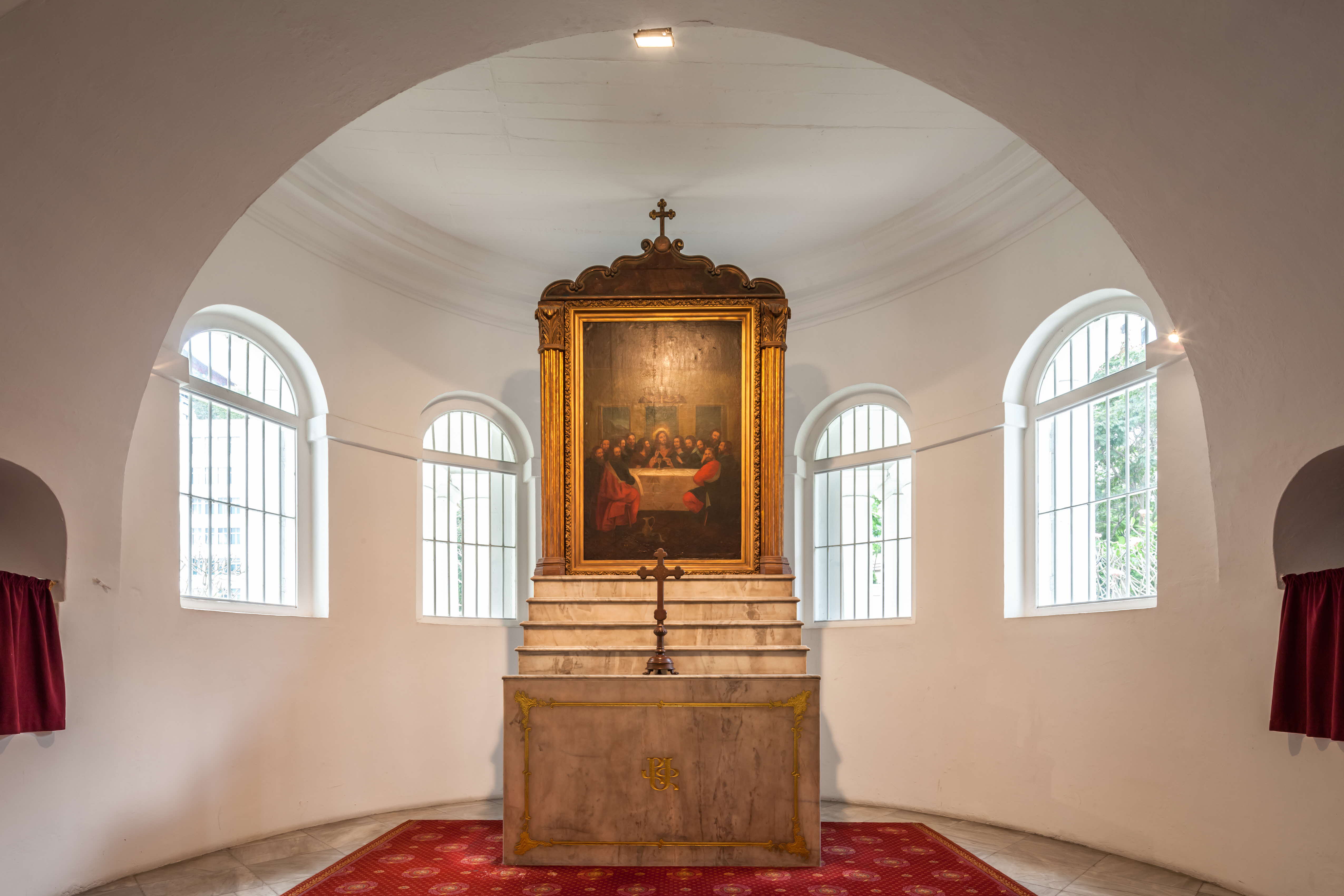A hidden gem in the heart of Singapore’s Civics and Cultural District, Fort Canning Centre – located atop Fort Canning Hill – exudes peace and tranquillity against a backdrop of lush greenery.
Originally constructed as British army barracks in 1926, the centre’s colonial origin is reflected in its architecture. A pitched roof with wide overhanging eaves – a feature prevalent in British military buildings of the time – protected residents from the heat of tropical weather.
Graced with streamlined motifs in the Neo-Classical style, the grand building is renowned for its dignified symmetry: a prominent central bay defines its main entrance, flanked by long wide-open corridors on both wings.
Time has greatly altered the initial function of the site on Fort Canning Hill. Following periods of military use by the Malaya Command, the British army, and the Singapore Armed Forces in turn, Fort Canning Centre was converted into squash courts and offices in the 1970s.
It was later reinvented as a place for the arts. In the 1990s, Fort Canning Centre was home to two of Singapore’s prominent arts groups – the Singapore Dance Theatre (SDT) and Theatre Works. Both have since moved to new premises.
Between 2015 and 2016, the centre briefly housed the private art museum Singapore Pinacotheque de Paris.
Extending beyond Fort Canning Centre, the shift towards the arts is reflected in the programmes held at Fort Canning Park – the site of several renowned outdoor art events, such as SDT’s “Ballet Under the Stars”, “Festival Village” (part of Singapore’s Festival of the Arts) and “World of Music, Arts and Dance”.
In 2019, the nation’s bicentennial showcase, exploring Singapore’s history from 1819 onwards as well as beyond 1819, was centred at Fort Canning. Nine historical gardens were recreated at Fort Canning Park, while two newly installed stretches of covered escalators and a platform lift made the hill more accessible to all.
Notably, the Bicentennial Experience – the centrepiece event of the bicentennial – was hosted at Fort Canning Centre and closed on 31 December 2019.
The building is also being considered by NParks to be adaptively reuse as a heritage museum in the future, featuring exhibits that celebrate the history and natural history of Fort Canning area through the 14th, 19th, and 20th centuries.
This is a conserved building(s) by the Urban Redevelopment Authority (URA), please visit URA’s Conservation Portal for more details.
Buildings and sites featured on Roots.SG are part of our efforts to raise awareness of our heritage; a listing on Roots.SG does not imply any form of preservation or conservation status, unless it is mentioned in the article. The information in this article is valid as of October 2019 and is not intended to be an exhaustive history of the site/building.




